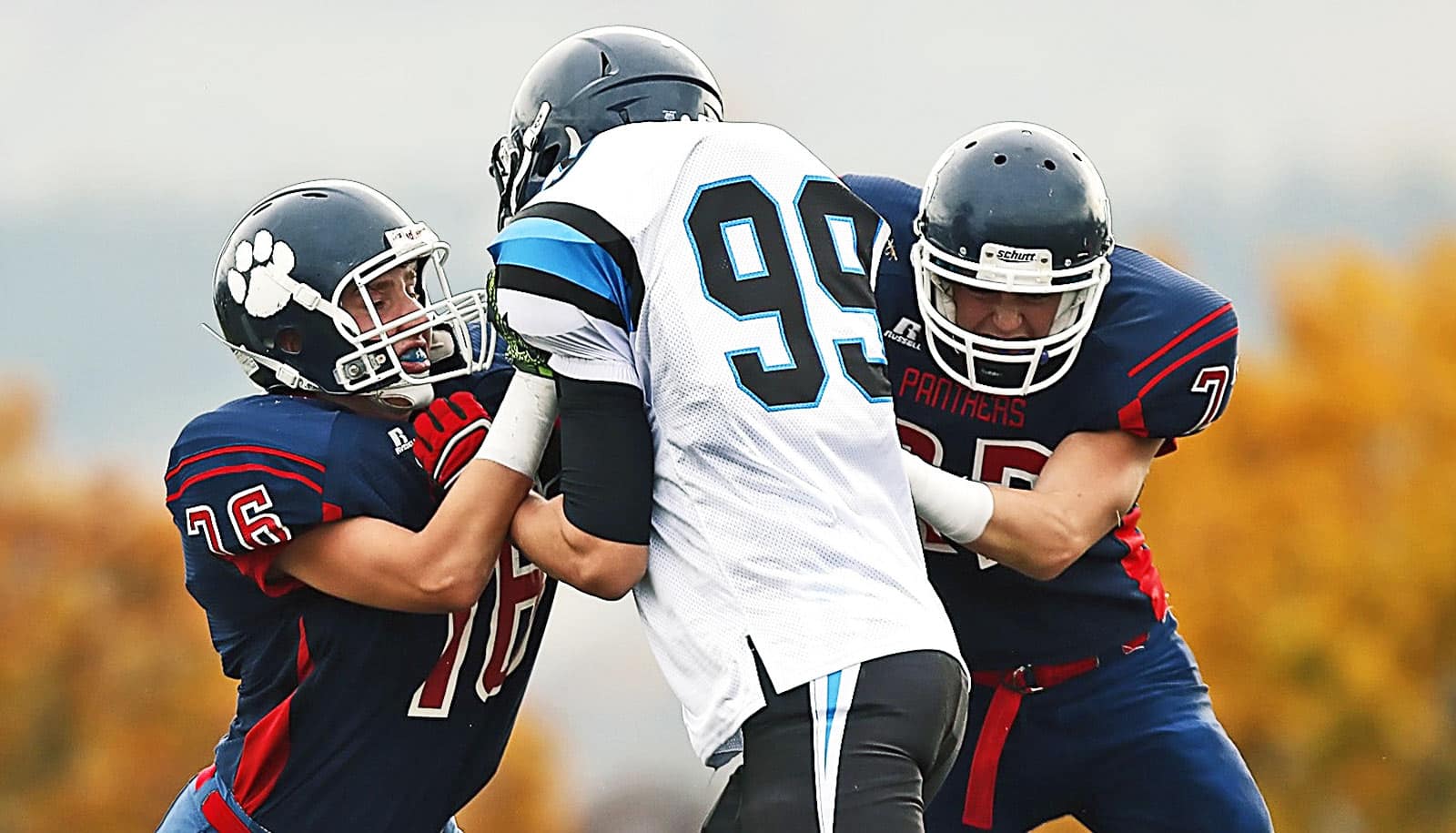Winning a national championship may be the ultimate goal of sports team today, but for foraging societies long ago, games involving contact may have helped hone skills for warfare, say researchers.
“Skeletal evidence from Africa suggests that warfare dates back to at least 10,000 years ago,” says Michelle Scalise Sugiyama of the University of Oregon’s anthropology department. “People ask often ask, what did people back then fight about? Well, that can be answered with, ‘What do you got?'”
Their theory: Team contact play developed skills needed for lethal raiding, which involved surprise attacks using bare hands, spears, and clubs.
In a paper in the journal Human Nature, Scalise Sugiyama and colleagues identified a previously unrecognized type of play, or coalitional play fighting, and tested for its presence in hunter-gatherer societies. They associated eight motor activities—catching, dodging, grappling, kicking, parrying, running, striking, and throwing—with both team play fighting and lethal raiding.
“It does look like hunters-gatherers engaged widely in this type of play,” says Scalise Sugiyama, whose research revolves around the evolution of symbolic behavior, such as storytelling, art, and play. “We found evidence for four or more of these motor patterns being present in individual games played in 39 of 46 culture regions around the world.”
For the study, Scalise Sugiyama and colleagues reviewed written descriptions—some only brief mentions—made by anthropologists about team contact games. From the descriptions, they inferred what motor patterns were used in games played by foragers.
The study merges two long-standing hypotheses. The first is that play is an adaptation that develops skills needed later in life. The second is that human males have evolved adaptations for engaging in warfare.
Her group theorizes that team contact play developed skills needed for lethal raiding, which involved surprise attacks using bare hands, spears, and clubs.
“If coalitional play fighting does develop skills used in actual warfare, then we would expect to find coalitional play fighting in forager societies, not just in industrial or agricultural contexts,” Scalise Sugiyama says.
Her team notes that most forager societies they examined played more than one type of team contact game, which likely assured that all eight motor patterns they identified got practice and gained strength.
The project, she says, speaks to the question of whether humans have evolved adaptations for engaging in warfare. “If we want to prevent or reduce the likelihood of warfare occurring, we need to know why it occurs, what makes it happen,” she says. “That debate over what causes warfare is important for those reasons.”
A weird thing happened to men about 7,000 years ago
Adaptations for warfare, she adds, may explain the continued interest, especially among males, in playing and watching team sports.
“You have to work together as a team to achieve your goal and also fend off the opposing team,” she says. “That takes a lot of coordination, division of labor, and timing. That’s still relevant in modern society.”
Games allow people to develop, rehearse, and test various life skills under relatively safe conditions, she says. Other common games in forager societies, such as chase play and target practice, may develop skills used in predator evasion and hunting.
The paper is part of a special issue of the journal that looks at team sports. Scalise Sugiyama is coauthor of an introductory article, “Toward a Natural History of Team Sports,” with Cornell University’s Kevin M. Kniffin.
Source: University of Oregon



